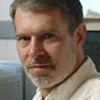Aleksandr Ivanovich Oparin (1894–1980)
Auteur van El origen de la vida
Over de Auteur
Fotografie: Oparin and Kursanov (1938) (Public domain)
Werken van Aleksandr Ivanovich Oparin
Life, its nature, origin and development 7 exemplaren
The chemical origin of life 2 exemplaren
Proceedings of the First International Symposium on the Origin of Life on the Earth : held at Moscow 19-24 August 1957 (2013) 2 exemplaren
El origen de la vida. Prologo con resena critica de la obra, vida y obra del autor, y marco historico. (Spanish… (2013) 2 exemplaren
El origen de la vida sobre la Tierra 1 exemplaar
Origen, El, de la vida 1 exemplaar
A Origem da Vida 1 exemplaar
Life : its nature, origin and development 1 exemplaar
Kaasaegseid vaateid elu tekkimisele : [ühingu Kesklektooriumis Moskvas 9. okt. 1947 peetud avaliku loengu… 1 exemplaar
Elu, selle loomus, tekkimine ja arenemine 1 exemplaar
El Orígen de la Vida 1 exemplaar
The universe 1 exemplaar
El origen de la vida 54/23E 1 exemplaar
EL ORIGEN DE LA VIDA 1 exemplaar
Tagged
Algemene kennis
- Gangbare naam
- Oparin, Aleksandr Ivanovich
- Officiële naam
- Опа́рин, Алекса́ндр Ива́нович
- Pseudoniemen en naamsvarianten
- Oparin, Aleksandr I.
- Geboortedatum
- 1894-03-02
- Overlijdensdatum
- 1980-04-21
- Graflocatie
- URSS
Rússia - Geslacht
- male
- Nationaliteit
- URSS
Rússia - Geboorteplaats
- Úglitx, Rússia
Úglitx, URSS - Plaats van overlijden
- Moscou, Rússia
Moscou, URSS - Beroepen
- biochemist
- Organisaties
- Universitat Estatal de Moscou
Acadèmia Soviètica de Ciències - Prijzen en onderscheidingen
- Heroi del Treball Socialista (1969)
Premi Lenin (1974)
Medalla Lomonóssov (19??)
Leden
Besprekingen
Misschien vindt je deze ook leuk
Gerelateerde auteurs
Statistieken
- Werken
- 20
- Leden
- 182
- Populariteit
- #118,785
- Waardering
- 3.8
- Besprekingen
- 2
- ISBNs
- 36
- Talen
- 1












He suggests an evolution on the cooling earth of a great variety of the simpler hydrocarbons (alcohols, aldehydes, ketones, organic acids etc.) through the oxidation by the oxygen component of water. These reacted with ammonia which appeared at that time and thus amides, amines and other nitrogenous derivatives.
He is at pains to rule out the spontaneous development of life and also makes the point that any complex organic molecules that might have developed after initial life had formed, would be instantly devoured by that life. Hence virtually impossible to replicate that situation today.
I was impressed that, with the knowledge of chemistry available at the time, that Oparin was able to put together a reasonable sort of story. I also learned that If some solutions were simply left that more complex chemicals might emerge: formaldehyde plus chalk gives some sugars; the ethyl ester of glycol ....allowed to stand by a window....produced slimy strands with several properties like proteins.....it was a polypeptide. He also emphasised something that I should have known (but didn't really): that all transformations of organic matter within the living cell are based on three principal reaction types:
1. Condensation (lengthening of the carbon chain and the reverse ...splitting the chain between two adjacent carbon atoms).
2.Polymerisation (the union of two organic molecules through an atom of oxygen or nitrogen.....and hydrolysis..the reverse process of splitting up such unions) and
3. Oxidation ( with the inevitable reverse process of reduction).
And water plays a major role in all these reactions...as do catalysts.
Oparin makes a lot of the formation of gels and sols and what he call coacervates...kind of like the situation where hyrophyllic and hydrophobic molecules line themselves up in a regular formation. (Today this is seen as the essence of creating a membrane..though Oparin doesn't seem to consider this).
Of course, Oparin has no concept of DNA at this time and seems to focus exclusively on the evolutionary development of organic molecules. He does make the interesting point that most processes are messy and involve mixtures of various sorts and mixtures will usually give different results to the pure molecules in test tubes, He also makes an interesting point about the energy released from three processes from 1 gm of sugar: From respiration ..674 calories; from Alcoholic fermentation...28 calories and from lactic acid formation 18 calories . (And with the lactic acid process it's not unusual for other products to be formed with the lactic acid). He suggests that alcohol and lactic acid are the more primitive mechanisms and probably evolved first. He also suggests that the processes of lactic acid and alcohol fermentation are outgrowths of the (rather messy and complicated) butyric acid fermentation ....and they represent advanced types of fermentation which have been passed on to the more highly evolved processes.
He also insists that organisms did not get their start from metabolising carbon dioxide. That came much later ...after various organic molecules developed on the earth.
It was also interesting to me to note that Oparin mentions the theory of symbiogenesis (quoting Kozo-Poljanski) with a cell nucleus consisting of the residues of a primitive living unit. I think Lynn Margulis is generally given credit for this concept ....though she wasn't born until 1938.
All in all, an interesting book. Obviously very dated but fascinating for ideas that are introduced and also fascinating for the chemistry that I was unaware of. I give it 4 stars.… (meer)